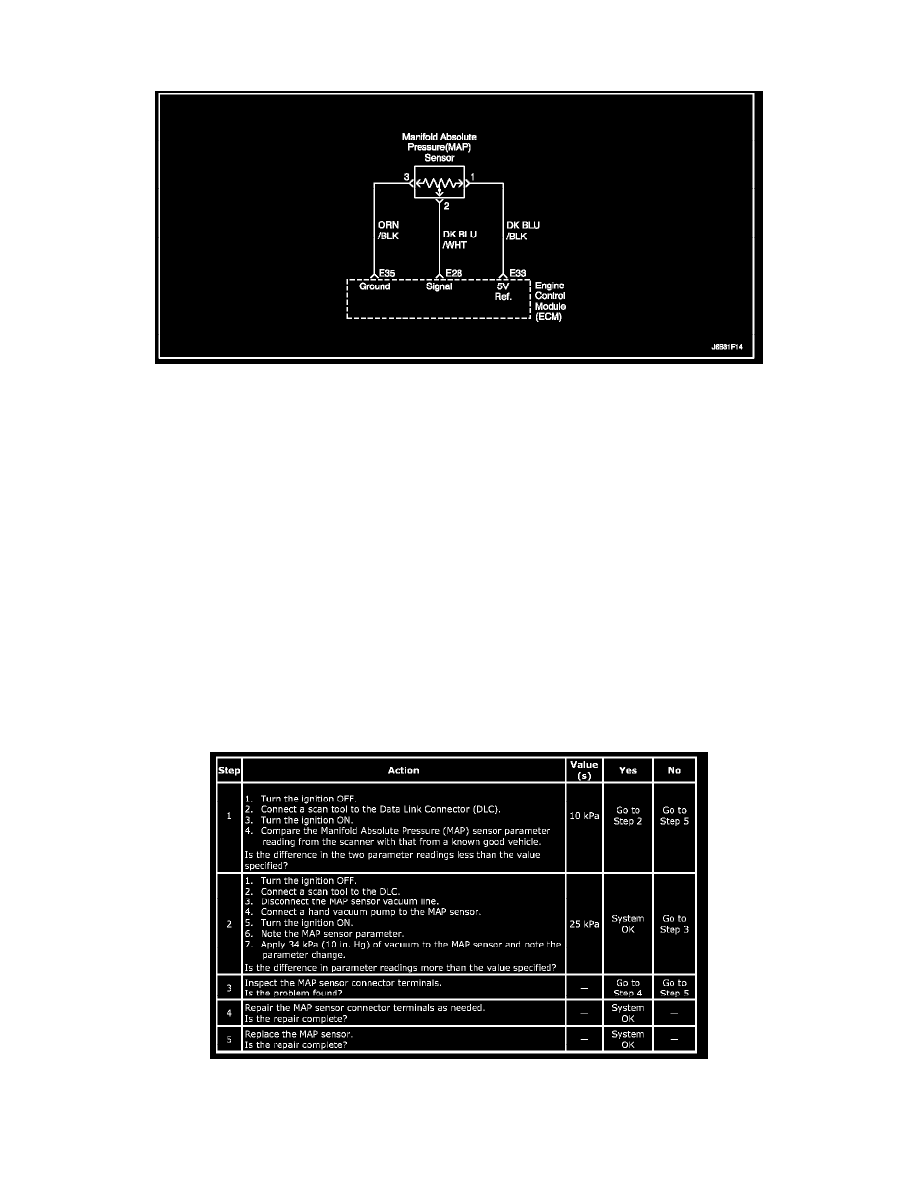Reno L4-20L (2006) - Manifold Pressure/Vacuum Sensor Location

Manifold Pressure/Vacuum Sensor: Testing and Inspection
Manifold Absolute Pressure Check
Manifold Absolute Pressure Check
Circuit Description
The Manifold Absolute Pressure (MAP) sensor measures the changes in the intake manifold pressure which result from engine load (intake manifold
vacuum) and RPM changes. The MAP sensor converts these changes into a voltage output. The Engine Control Module (ECM) sends a 5 volt reference
voltage to the MAP sensor. As the intake manifold pressure changes, the output voltage of the MAP sensor also changes. A low voltage (high vacuum)
output of 1 - 2 V is present at idle. A high voltage (low vacuum) output of 4.0 - 4.8 V is present at wide open throttle. The MAP sensor is also used
under certain conditions to measure barometric pressure. This allows the ECM to make adjustments for altitude changes. The ECM uses the MAP sensor
for fuel delivery and ignition timing changes.
Test Description
Number(s) below refer to the step number(s) on the Diagnostic Table.
1. Applying 34 kPa (10 in. Hg) of vacuum to the MAP sensor should cause the parameter to change. Subtract the second parameter reading from the
first. That parameter value should be more than 25 kPa. When applying vacuum to the MAP sensor, the change in the parameter should happen
instantly. A slow parameter change indicates a faulty MAP sensor.
2. Disconnect the MAP sensor from the bracket and twist the MAP sensor. Output changes more than 2 kPa indicate a faulty connector or
connection.
Troubleshooting
Step 1-5
